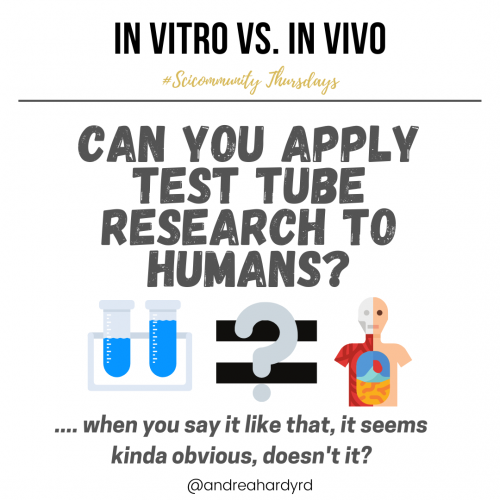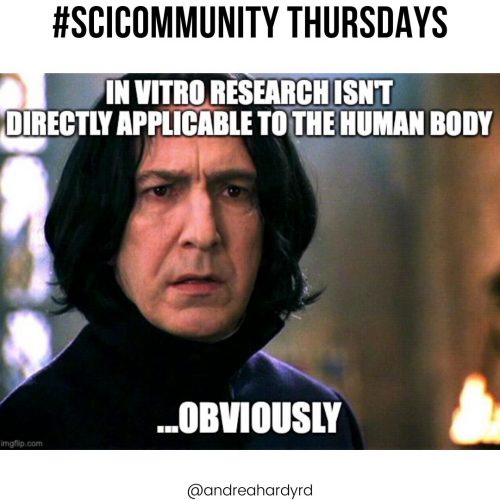What’s the difference between in vitro and in vivo? On Instagram @AndreaHardyRD, I talk all about how important it is to discuss the limitations of in vitro research, and why it can’t directly be applied to humans.
The best #fearmongerers take in vitro research and make claims that that’s what happens in the human body.
Let’s rewind a bit.
In vitro research is what many think of as ‘test tube’ research. It uses cell lines from humans or animals. It can be extremely useful to explore mechanisms of action and dose dependant response. It’s simple, cost effective, and can allow us to explore safety PRIOR to moving to more complex models (animals, humans).
In vivo research is literally ‘in the body’ research. It becomes more complex because our cells don’t function individually, rather all the cells, and the complex interactions that occur between cells work together, making it much harder to see exactly what’s going on, but will give us a much more realistic understanding of outcomes.
In vitro research CANNOT directly be applied to humans. It serves as a jumping off point. (What happens in a test tube, often stays in a test tube.)
In addition, in vitro research often uses extremely high doses of substances to really understand cause and effect, and the dose isn’t always applicable to exposures in vivo.
The PROBLEM comes in when people pull these studies as ‘proof’ of harm. The perfect example? Samsel and Seneff and their anti-pesticide crusade. Pull any piece of literature from them and watch them jump from in vitro studies, to creating far fetched assumptions of exactly how that impacts the human body, and the negative outcome they’re associating it with.
This.is.misusing.science. AND! To the lay person – it sounds SUPER credible (and scary!) There’s *GASP* a study that shows that high doses of something exposed directly to a cell impacts that cells metabolism! Our cells don’t exist in test tubes. And, doses frequently used in these studies, we’re just not exposed to – often no where near it! (the dose makes the poison – there are no toxic substances only toxic doses!)
Pro tip: if the person doesn’t discuss the limitations of the in vitro research, or over applies it (ie. this is important to humans because we see celiac disease rising so this MUST be why) – toss the paper in the trash.



Recent Comments